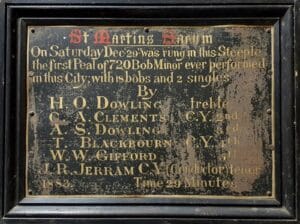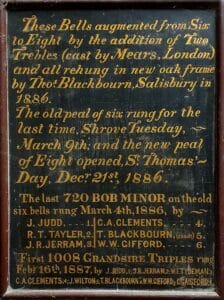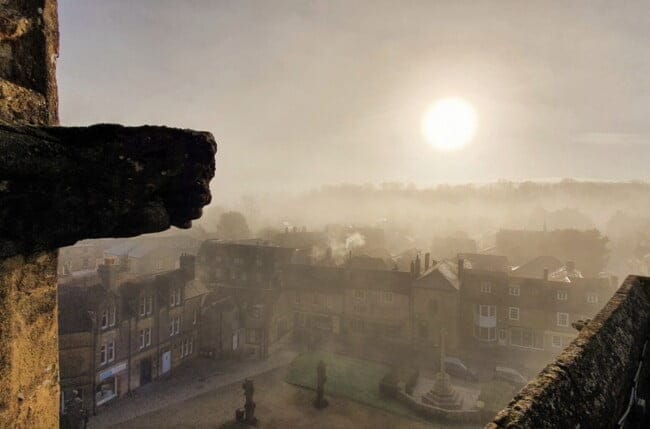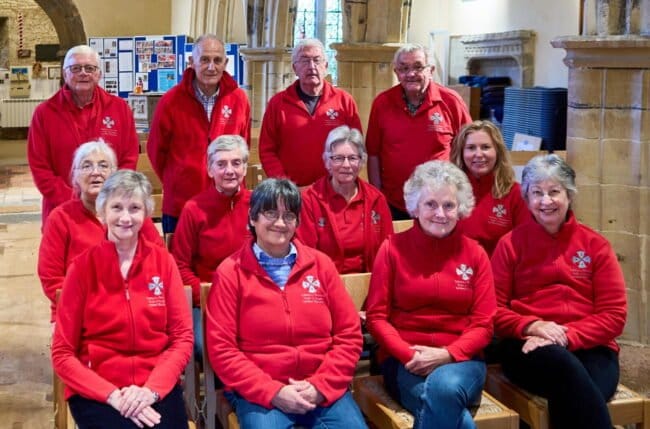In the ground floor ringing chamber of St Martin’s church, Salisbury, are some fascinating peal boards which commemorate activity at the very beginnings of our Guild.

The oldest is a board recording a 720 of Plain Bob in 1883. Ringing the tenor was James Jerram who had come to Salisbury a year earlier soon to be followed by his friend and bellhanger, Thomas Blackbourn. They met in Lincolnshire where Jerram, the son of a wealthy country parson, had taught the younger Blackbourn to ring and together they had rung many performances of 720 (very common at the time being an extent on 6) and had worked together on several bellhanging projects.
What brought Jerram to Salisbury is unclear but it is evident that he quickly became involved in the encouragement of ‘scientific’ ringing in the area, with Blackbourn joining him and setting up in business as a bellhanger in Salisbury soon afterwards. He was a gentleman of modest independent means and would probably have provided capital and engineering advice to the business; together they did numerous jobs including the rehanging of the heavy 10 at Wells Cathedral which has a two tier frame that Jerram designed.
Jerram was a founder member of the Guild when it was formed in 1882 and within a year the Guild had appointed him as its first Instructor of Change Ringing. He was provided with board and lodging and reasonable expenses. By 1887 he was also Guild Secretary to be succeeded by Blackbourn in 1895.
Probably the most important board, though, from the Guild’s perspective at least, is that which records a peal of Grandsire Triples rung in 1887 for Queen Victoria’s Golden Jubilee; the very first peal for the Guild in Salisbury. In 1886 the bells had been rehung and augmented to make an 8 by Blackbourn and Jerram and we can see, in the production of the peal board (written and produced by Jerram), their pride in how far ringing had developed in the city.
This first peal was soon followed by one of Bob Major in 1888, Kent Treble Bob in 1889 closely followed by Stedman Triples in the following month of the same year.
Also in the tower is an affectionate memorial to one of the ringers, William Welch Gifford, who was a prolific ringer and rang in all of the peals commemorated. He had learned to ring at Durweston where his family farmed 700 acres and lived in some comfort. He had moved to Salisbury where he worked as a bankers clerk, a position he held his whole life during which he rang 424 peals of which 89 were at St Martin’s where he was tower captain. He provided the funds for the 2nd in the augmentation.
Notable also is Charles Clements who also features on all the boards. He was born locally and his father worked as a delivery man for the railway. He must have been something of a prodigy as a ringer as on the oldest board from 1883 he would have been 15 years old and it shows that he was a College Youth. Jerram had been a member since 1875 and Blackbourn, 1881; they must have taken the young Clements under their wing once they saw his promise and talent. He lodged with Jerram as a young student, later becoming ordained, and he went on to ring many peals.

Blackbourn expanded his business to include bell founding in 1901 but it seems that this was a stretch too far and the business folded in 1904. A number of bells still exist throughout the south-west that he founded. In an affectionate obituary in the Ringing World in 1933 he is described as “a sound craftsman and a good ringer.” A less sympathetic note is struck by George Elphick in Sussex Bells and Belfries (1970) where he offers us, “He was by nature a jovial man, but unfortunately became too fond of drink, and this was the cause of the decline of his business”.
James Jerram ended his days at his home in The Cathedral Close in 1933. but his influence on ringing in the diocese, and that of his talented contemporaries, continues to bring much joy to this very day.
I know Neil Skelton is working on a much fuller history of these early ringers which we hope to publish at some future date, and I’m grateful to him for the detail on William Gifford’s peals.
Andy Waring
Minor Postscript
The St Martin’s ringing room also contains two ‘witches marks’ in the entrance which probably date from the 17th or 18th century and were inscribed to protect the chamber (and whoever was in it) from the evil spirits and demons that it was believed lurked outside. I’d speculate it may have been the sexton who cut them as he would have been expected to toll a bell sometimes in the early morning or dark evening and would have been in there on his own.














